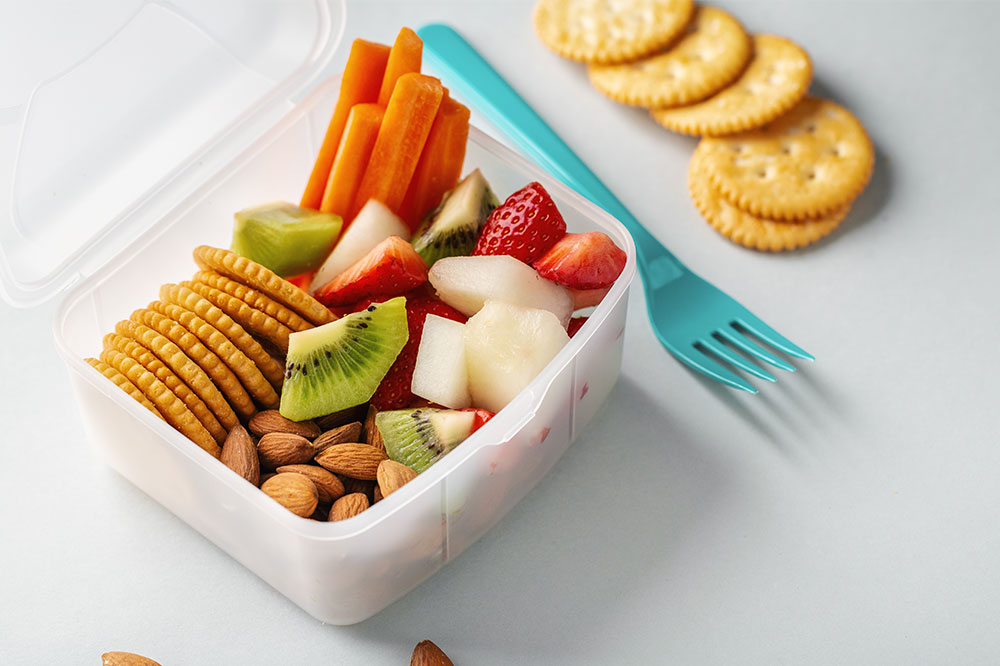
20 Delicious Allergy-Free Snacks for Kids
Children lead an active lifestyle. So naturally, they work up an appetite and crave foods to satiate these hunger pangs. But you wouldn’t want your children to eat too much of foods that are excessive in added sugar, vegetable oil, and preservatives and trigger their allergies. To avoid this, you can pack healthy lunches that include the following wholesome and allergy-free snacks that they will love to enjoy during breaks.
Popcorn
Kids can munch on this tasty, filling, and allergy-free snack all day long. Popcorn is low in calories and rich in nutrients that are easily absorbed by the body. It is a whole grain, so the corn kernels are filled with fiber that helps curb hunger pangs and keeps kids satiated throughout the day.
Baked nachos
Baked nachos are gluten-free and contain essential fibers, and are delicious snacks that kids can munch on. You can even make some homemade salsa dips with fresh tomatoes, cilantro, and lime. You can also whip up some fresh guacamole with avocados to pair it with nachos.
Homemade fries
Instead of potato fries, why not make sweet potato fries that are healthier and allergy-free? You can even use an air fryer or bake the chips in the oven to make them oil-free and retain nutrients. The best part is that these chips also have a good shelf life, so you can bake a big batch and hand out the snacks every other day.
Pretzels
Pretzels are absolutely popular among kids. You can make the baked kind, as a little indulgence never hurts anyone. You can even consider store-bought options for packing a school snack.
Pita chips
Kids who are not allergic to gluten can enjoy some delicious pita chips bought from the supermarket. You can even make some homemade dips and condiments that go well with these chips for a hassle-free snack option.
Jerky
Beef jerky or turkey jerky marinated in any other sauce base except for soy is another good allergy-free snack for school. Of course, some jerky flavors tend to be quite strong and overpowering with artificial flavors, so consider buying dried jerky made with an organic blend of spices that your kids will certainly relish during snack time.
Crackers
Graham crackers are filling, tasty, and nutritious and come in a variety of nut-free options, best for kids to take to school and enjoy during recess. Crackers can form a base for many popular condiments and spreads, such as cheese, jams, and butter. You can make tiny finger sandwiches using these crackers.
Rice crackers
Rice crackers, especially the ones without additives and preservatives, make for an excellent snack for kids. They are super crunchy and allergy-friendly, and they can be paired with dips, sauces, and organic jams. You can also substitute graham crackers for rice crackers, as these rice treats are really low in calories.
Rice crispies
Puffed rice crispy treats come in a variety of flavors available at the local supermarket. Your kids can enjoy these crispy treats as is or use them as a base to create some delicious crispy sandwiches.
Kale chips
Both curly and flat varieties of kale can be made into tasty chips. Your kids will not even mind that it’s a baked piece of vegetable because the recipe ingeniously masks the earthy flavor of kale.
Chex mix
Rice cereal mixes are also a great gluten-free dry snack to munch on and curb those hunger pangs during break time. Supermarkets stock up on rice Chex mixes made with assorted flavors featuring honey nut, apple cinnamon, chocolate, peanut butter, and blueberry.
Seaweed snacks
Roasted seaweed snacks are a rich source of iodine, copper, calcium, magnesium, potassium, probiotics, and iron, all the necessary nutrients that growing kids need on a daily basis. This is a tasty, crunchy snack option that kids can munch on.
Fruit pops
Fruit pops are really easy to make at home. Alternatively, you can even buy and keep various flavors from the supermarket. Nutritionists suggest lemon-flavored pops for beating the summer heat. Lemon is rich in nutrients that help replenish lost electrolytes.
Apple wedges
Apple wedges are easy to prepare fresh and help curb hunger pangs throughout the day. You can use Granny Smith apples for the additional crunch and top off the slices with peanut butter, caramel, or chocolate. Kids will love this creative, sweet snack.
Oatmeal jam squares
Oatmeal is a great fiber-heavy breakfast option that boosts metabolic activities. You can use oatmeal to make quick and easy crackers by laying it evenly on a pan and baking it for some time. Fill the baked sheets with some delicious jam or jelly to make colorful jam squares.
Apple sauce
Apple sauce is easy to make at home and to be filled up in pouches for a quick snack at school. Alternatively, there are food brands that produce organic apple sauce puree pouches that you can buy and stock up on.
Yogurt
Kids who are not lactose intolerant can certainly enjoy a variety of flavored yogurt. Since store-bought flavored yogurt contains a lot of sugar, you can top some yummy Greek yogurt with fresh fruits and honey.
Dried fruit
Raisins are one of the top recommended dried fruits to make allergy-free cookies, shortbreads, and even biscuits. They are rich in fiber and iron. Also, dried apricots, dried plums, and banana chips are acceptable nutritious options in dried fruits.
Fruit puree
Fruits are naturally rich in sugar, so you don’t even have to add any refined sugar to make this puree snack. Simply puree seasonal fruits and have them sealed in small pouches that kids can bring to school to enjoy during their breaks. You can even flash-freeze these at home to make fresh popsicles.
Nut-free candies
Store-bought nut-free candies are also good filler snacks that your kids can eat on occasion. You can also make nut-free candies at home that are free of refined sugar.


